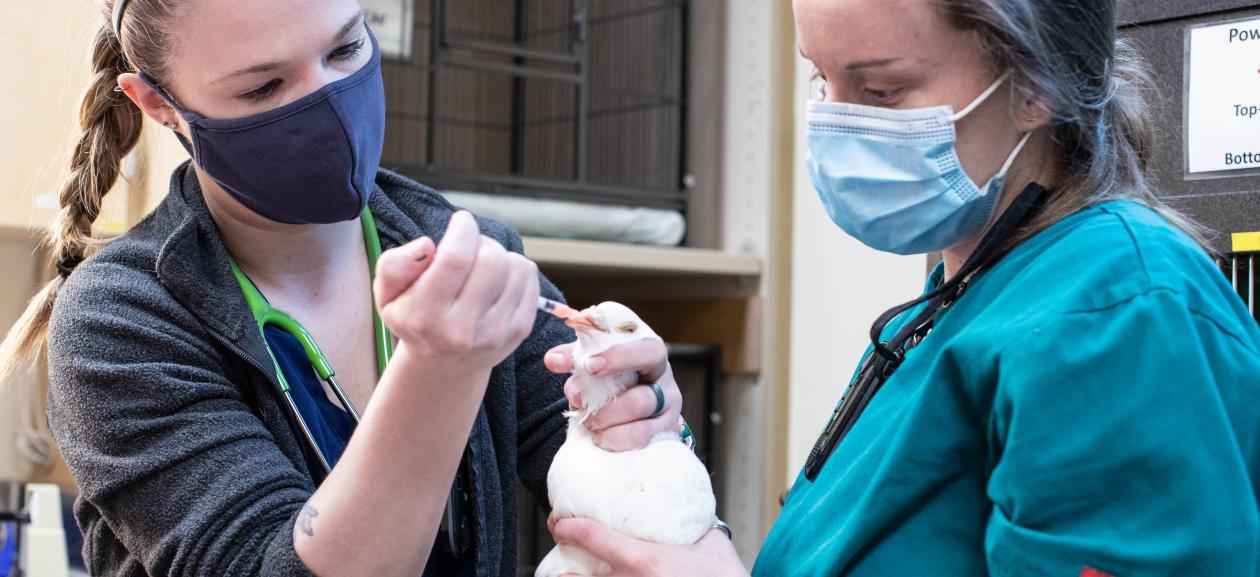
Retention and Engagement for Veterinary Technicians
Nobody said this job would be easy. There isn’t a veterinary technician in the world that started their career thinking that this job would be easy on their backs or even easy on their hearts. However, occupational stress and burnout are reaching new heights. Exhausted and overwhelmed, all team members are feeling the weight of excessive workloads, high patient counts, and staffing shortages. Now more than ever, we find ourselves on the receiving end of angry clients impacted by the economic consequences of this pandemic that affects their ability to pay for the care their companion animals need.
Nobody said this job would be easy, but I’m tired of hearing stories every week about technicians leaving the field before they even come close to reaching their maximum potential. Technicians are leaving the field at a pace that is hard to match by the numbers graduating. People like to ask, “Where are all the technicians?”. We must do better at keeping good technicians from leaving the field. Right now, across the country, technician programs are scrambling to figure out how to keep their programs alive and running. They are likely seeing a decrease in enrollment and facing challenges getting students to graduation with limited lab schedules. Now more than ever, we need to focus on the retention of the technicians that are already in practices.
Nobody said this job would be easy, but we always hoped that this would be a lifetime career. If you are lucky enough to work alongside someone who will retire independently in this career, take notes and ask them how it’s done. In 2018, an American Hospital Association Compensation and Benefits report showed that the turnover rate for veterinary technicians in the U.S. is 23%. This is 8% higher than the mean national rate. There aren’t many studies in existence that measure the job satisfaction and engagement rates of veterinary technicians, but we are aware of some contributing factors. Technician utilization, a livable wage that reflects an individual’s contribution to the success of the team, continued education, respect, and opportunities for upward mobility all can have a tremendous impact on a technician’s ability to have longevity in this field. While we wait on that study, technicians know better than anyone the truths listed in that last sentence.
Nobody said this job would be easy, but some days are way harder than others. Last week was 52 hours full of hard moments. It seemed like there were sad cases and losses despite best efforts from great minds and giant hearts. Patient counts and wait times were high and I watched coworkers that I care about struggle. Today I was at home and I got a text asking if I would be willing to help run anesthesia on a very critical exotic pet. The risks were high, but the anesthetic could not be avoided. I worked for 2 hours and 18 minutes today. I placed an IV catheter, intubated, and helped run a successful anesthesia on the most critical tiny patient. There are some skills that still give you a rush of excitement no matter how many times you do it. I got to teach another technician on the floor about an area of medicine that I’m passionate about. I heard words of gratitude and respect from incredible doctors and technicians with whom I have the utmost respect and I got to share in the excitement of it all with a friend who is just as nerdy about exotic emergency medicine as I am. In 2 hours and 18 minutes, the engagement and excitement I felt about my job reenergized me for the work ahead and it reassured me that I’m doing what I was meant to do.
Nobody said this job would be easy, but we all have an opportunity to help veterinary technicians realize the potential of making this a lifetime career. Individuals who work within their passions, who are recognized, utilized, and respected for their skills and education will be much more likely to be engaged with the work that they are doing. If we allow this pandemic state to get in the way of the parts of our job that keep us passionate about our jobs, it will no doubt impact the wellness of the team and their ability to overcome this adversity. I urge each hospital to promote education, engagement, recognition, and full utilization of CVTs within your practice so they can reach their full potential. Maximizing our full potential, we are best able to meet the growing demands that this industry is placing on us to provide excellent healthcare to companion animals, all while making this a lifetime career.
References:
Hathaway, A. (2019, Spring). The Importance of Veterinary Technicians. Retrieved from https://todaysveterinarynurse.com/articles/from-the-field-the-importance-of-veterinary-technicians/
Liss, D. J., Kerl, M. E., & Tsai, C.-L. (2020). Factors associated with job satisfaction and engagement among credentialed small animal veterinary technicians in the United States. Journal of the American Veterinary Medical Association, 257(5), 537–545.
Liss, D. (2012, January/February). Technician Utilization. Retrieved from https://www.cliniciansbrief.com/article/technician-utilization
Recent Posts
Holiday Hazards for Your Pet
Deck the halls with boughs of holly … but be sure it’s out of reach of your furry friends! It’s easy to get swept up in the festivities of the season, but don’t forget that added fun means added risks for your pets.
Why Chocolate Is So Risky for Pets
Milk or dark, candy or cake – chocolate may be one of our favorite sweet treats, but it’s definitely not meant to be consumed by our pets.




